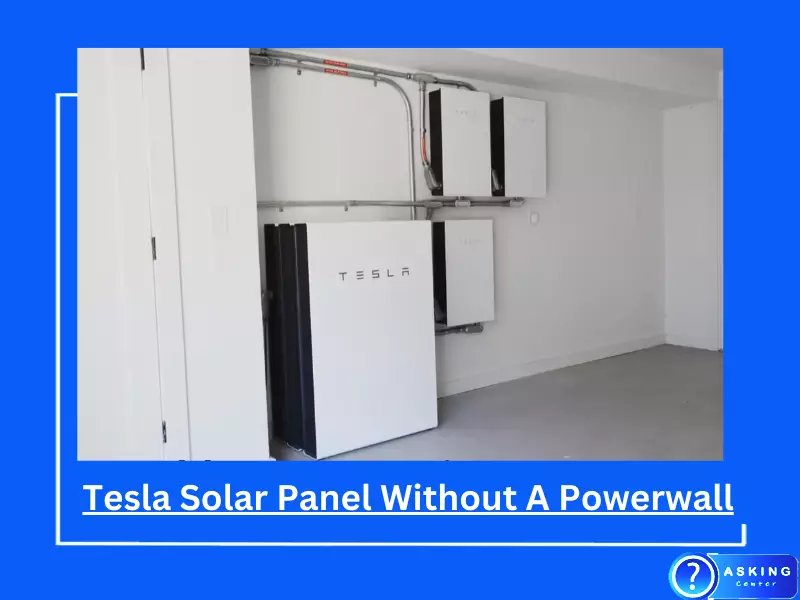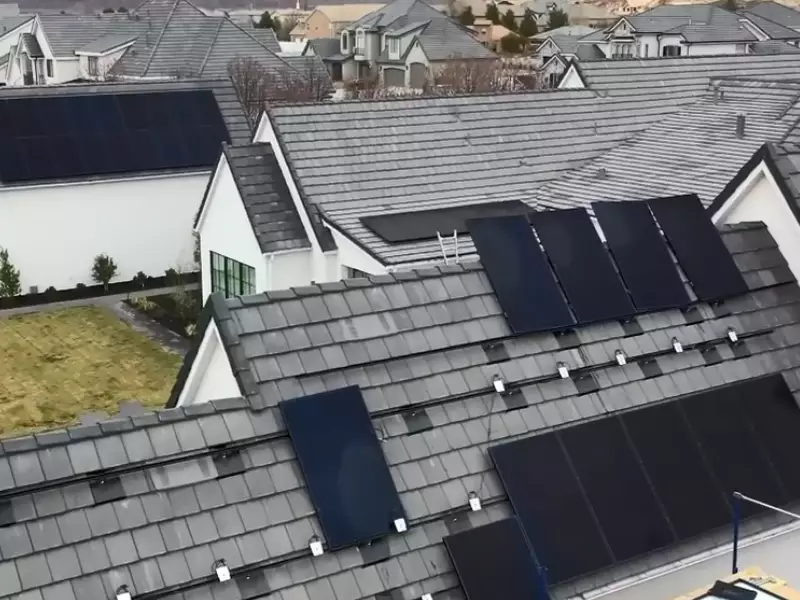Solar energy is fast becoming a dominant player in the renewable energy sector, thanks to its ability to provide clean, sustainable, and increasingly cost-effective power.
Among the leaders in the solar energy field, Tesla has made its mark with its innovative Solar Panels and the Powerwall, a battery storage system that ensures continuous power supply. However, it’s not uncommon for potential users to ponder whether they can install Tesla Solar Panels without a Powerwall.
Yes, you can use Tesla Solar Panels without a Powerwall. While the Powerwall allows for energy storage, it’s not mandatory to operate your solar panels. In essence, you can have a functioning solar system with Tesla Solar Panels that are grid-tied and continue to supply power during the day.
Solar energy solutions can be intricate, and understanding your options is crucial when deciding what works best for you. With a focus on Tesla Solar Panels, we will delve into various aspects of these solar systems, their installation processes, and reasons why you might opt to install without a Powerwall.
Understanding Tesla Solar Panels
What are Tesla Solar Panels?
Tesla Solar Panels are photovoltaic modules designed for converting sunlight into electricity. They are known for their sleek, low-profile design and high efficiency. Unlike traditional solar panels, Tesla panels blend seamlessly with your roof, providing aesthetic appeal without compromising on energy generation.

Unique Features of Tesla Solar Panels
Tesla’s unique approach to solar panel design ensures minimal aesthetic disruption while maintaining high performance. The panels have an integrated front skirt and no visible mounting hardware. Additionally, Tesla offers a 25-year performance guarantee, reassuring customers of their investment’s longevity.
How Do Tesla Solar Panels Work?
Like other solar panels, Tesla’s versions work by absorbing sunlight with photovoltaic cells, stimulating electrons, and creating an electric current. This DC (Direct Current) is converted into AC (Alternating Current) by an inverter for use in your home.
The Role of Tesla Powerwall
What is a Tesla Powerwall?
A Powerwall is a rechargeable lithium-ion battery system from Tesla. It’s designed to store solar power generated by solar panels for use when the panels aren’t producing electricity, such as at night or during power outages.
How Does a Powerwall Complement Tesla Solar Panels?
The Powerwall integrates seamlessly with Tesla Solar Panels, storing excess energy generated during the day. This stored energy can be used during the night or during grid power outages, ensuring an uninterrupted power supply.
How Tesla Solar Panels and Powerwall Work Together
When used together, Tesla Solar Panels and Powerwall provide a comprehensive solar solution. During the day, the panels convert sunlight into electricity. Any excess power that isn’t immediately used gets stored in the Powerwall. At night or during a grid outage, the Powerwall releases the stored energy, providing a round-the-clock power solution.
Tesla Solar Panels without Powerwall
While it’s beneficial to use a Powerwall with Tesla Solar Panels, it’s not a requirement. Tesla Solar Panels can work independently, connected to the grid, and supply power during daylight hours.
Factors to Consider
When considering Tesla Solar Panels without a Powerwall, it’s crucial to understand that your system will be grid-tied. This means that in the event of a power outage, your panels will not supply power for safety reasons. Additionally, any excess power generated will go back to the grid unless another form of energy storage is in place.
Why Would You Not Want to Use Powerwall with Tesla Solar Panels?
Cost Considerations
One of the main reasons someone might opt for Tesla Solar Panels without a Powerwall is the cost. Powerwalls come with a significant price tag. Although they can provide long-term savings by reducing reliance on the grid, the initial cost may be prohibitive for some homeowners.
Situational Factors
Certain situational factors might make a Powerwall less essential. For instance, if you live in an area with reliable grid power and infrequent power outages, the need for energy storage might be less compelling. Similarly, if most of your energy consumption occurs during daylight hours when your panels are generating power, a Powerwall may not provide significant additional benefits.

Installing Tesla Solar Panels
Installing Tesla Solar Panels is a process that requires careful planning and professional execution. Here’s a brief guide to the installation process:
Pre-installation Checklist
Before installing Tesla Solar Panels, you should consider the following:
- Roof condition: Your roof must be in good condition and capable of supporting the panels.
- Sun exposure: Your roof should have good exposure to sunlight, with minimal shading from trees or other structures.
- Local regulations: Check for any local regulations or permissions required to install solar panels.
Step-by-step Guide to Tesla Solar Panel Installation
- Site survey: This is the first step, where professionals assess your roof condition and plan the panel placement.
- System design: Based on the site survey, a solar system tailored to your needs is designed.
- Permitting: Necessary permits from local authorities are obtained.
- Installation: Professional installers mount the panels on your roof and connect them to your home’s electrical system.
- Inspection and activation: Local authorities inspect the installation. After approval, the system is activated, and you can start generating solar power.
Remember, installing Tesla Solar Panels should be carried out by professional installers to ensure safety and effectiveness.
Installing Tesla Solar Panels Without Powerwall
While a Powerwall adds significant functionality to a Tesla solar power system, installing solar panels without one is entirely feasible. The installation process remains largely the same, with the primary difference being that the system will be tied to the electrical grid, and there won’t be any provision for storing excess energy.
Reasons to Install Powerwall with Tesla Solar Panels
While it’s possible to install Tesla Solar Panels without a Powerwall, there are compelling reasons to consider including one in your system:
Energy Storage
The Powerwall stores excess solar power for use when the panels are not generating electricity. This can help you maintain power during the night or cloudy days, reducing reliance on the grid.
Backup Power
In the event of a power outage, a Powerwall can provide backup power, keeping your home running smoothly. This can be especially valuable in areas prone to power outages.
Energy Independence
A Powerwall can increase your energy independence, reducing your reliance on the grid and protecting you from grid power price increases.
Financial Savings
By storing excess solar power, a Powerwall can save you money in the long run, helping you get the most out of your solar power system.

Solar Energy Storage
Storing solar energy has become a significant aspect of modern solar power systems. This is where devices like Tesla’s Powerwall come into play. Solar energy storage allows users to store excess power generated during the day for use during non-sunny periods, increasing the efficiency and reliability of the solar system.
How Does Solar Energy Storage Work?
Solar energy storage works by storing the excess power generated by solar panels in a battery. This stored power can be used when solar panels aren’t actively producing electricity, such as at night or during cloudy weather.
Benefits of Solar Energy Storage
Storing solar energy can bring several benefits, including:
- Reduced Energy Costs: By using stored solar energy during peak usage times, you can avoid high utility rates.
- Energy Independence: With a solar battery, you’re less dependent on the grid.
- Backup Power: Solar batteries can serve as a backup power source during grid outages.
Understanding Tesla Warranties
Tesla stands behind its solar products, offering extensive warranties for its Solar Panels and Powerwall. Here’s a quick look at what the warranties cover:
Tesla Solar Panels Warranty
Tesla offers a 25-year performance warranty on its solar panels, ensuring they’ll perform at a certain efficiency for that duration.
Tesla Powerwall Warranty
The Powerwall comes with a 10-year warranty. Tesla guarantees that the Powerwall will maintain at least 70% of its capacity to hold a charge during this period.
Independence from the Grid
One of the key advantages of installing a Powerwall with your Tesla Solar Panels is increased independence from the grid. The Powerwall stores excess solar power for use when the panels aren’t generating power. This means you can rely less on the grid, saving on your utility bills and being less affected by grid outages or price increases.
Backup in Case of Blackouts
The Powerwall can provide backup power during grid outages. This means that, even if there’s a power cut, your home can remain powered by the energy stored in your Powerwall. This can be a significant advantage, especially in areas prone to power outages.
Eco-Friendly: The Green Advantage
Both Tesla Solar Panels and Powerwall offer eco-friendly advantages. By harnessing solar power, they reduce reliance on fossil fuels, contributing to a reduction in greenhouse gas emissions. Even if you choose to install Tesla Solar Panels without a Powerwall, you’re still making a green choice by opting for renewable energy.
Virtual Power Plants
A Virtual Power Plant (VPP) is a network of decentralized power generating units, like residential solar power systems, that are collectively run by a central control system. Tesla has been a pioneer in this area, with projects underway to create VPPs using its solar products and Powerwalls.
Return on Investment
While installing Tesla Solar Panels and a Powerwall requires an upfront investment, it’s important to consider the potential return on investment (ROI). Savings on utility bills, potential earnings from selling excess power back to the grid, and increased property value can all contribute to a positive ROI over time.
Conclusion
In summary, Tesla Solar Panels can be installed and function without a Powerwall. However, adding a Powerwall to your solar system can bring significant benefits, including energy storage, backup power, and increased energy independence.
It’s crucial to consider your specific needs, budget, and long-term goals when deciding whether to include a Powerwall in your solar power system.
